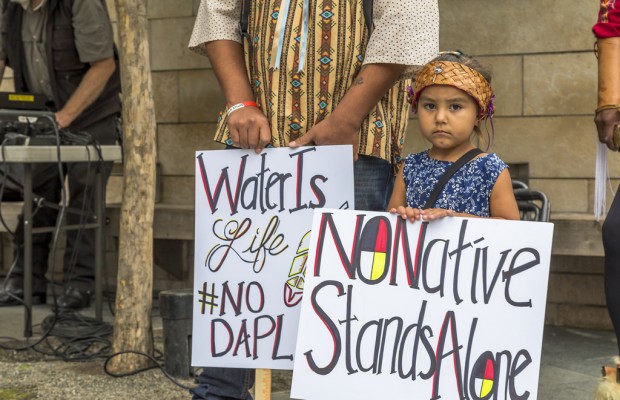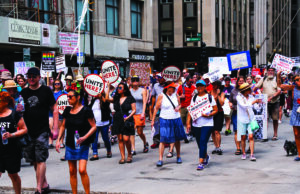The never ending fight against the DAPL rages On

The NODAPL hashtag that has been blazing through the media has finally been put to rest… or so some think. In early December 2016, the U.S army corps announced that the Dakota Access Pipeline (DAPL) could not be constructed in the original area due to environmental landmass inhibition. In response, many are rejoicing with the idea that the pipeline will be rerouted.
While the supposed rerouting of the pipeline is a step in the right direction, scientists and activists cannot put their worries to rest yet. The rerouting of the pipeline simply moves the environmental issues to a new place, and with the new presidency, many believe it may not be rerouted at all.
The success of the protesters must also be taken with a grain of salt. Everyone would love to marvel at the progress and success of the protest, yet we must also understand the truly unjust circumstances that called for the protest in the first place.
The Dakota Access Pipeline (DAPL), is an enormous crude oil transportation system that is routed to pass through four states: North Dakota, South Dakota, Iowa, and Illinois. The pipeline was originally supposed to have been constructed in a developed, white community, but was protested out.
Its proposed location was then moved to Standing Rock, a sacred Sioux Native American site. This has garnered the outrage of many protesters who have flown from around the country to stop the pipeline’s construction. The protesters slogan was “Water is Life” because the inevitable oil spills and disasters from the pipeline’s construction and use would have contaminated Lake Oahe, as the pipeline was set to run directly below the lake.
The double standard that our country’s politicians and businessmen promote is outrageous. People are quick to reroute the pipeline when it concerns a developed communities water supply, but when a sacred Native American area and centuries old water source is being threatened, it takes thousands of protesters and the Army Corps to halt construction.
The blind ignorance toward Native American culture and the valuability of Sioux lands speaks to something so much darker and more deep rooted than just the DAPL. Since the start of our country, people have been quick to use Native American lands without consideration for their significance or the people who reside on them.
Thankfully, after months of peaceful protesting, the land seems to have achieved amnesty, as of now, with the denial of the pipeline by the Army Corps.
However, as U.S. Senator from North Dakota, Heidi Heitkamp, says, although it seems that the fight has become an uphill battle in favor of the natives and protesters, “The fight is not winnable; when the administration changes, the easement is going to be approved”.
It seems that the pipeline will not be stopped, it will simply be rerouted. The environment won’t be saved and the land will not remain untouched by man, man will simply leave his mark elsewhere.
President-elect Donald Trump is also pushing for its construction. The chances that it will actually be rerouted grow slimmer as more powerful resistance to the new decision piles on.
Especially with the new president elect in favor of the continuation of the DAPL, the future seems grim for the protestors. They are pushing for an Environmental Impact Statement (EIS), but the EIS’s favorite loophole is mitigation, a tactic the government will likely pursue.
Although the Army Corp has temporarily halted the construction of the pipeline, politicians and supporters of the pipeline do not believe this has any impact on the DAPL. The corporation behind the project, Energy Transfer Partners and Sunoco Logistics Partners, said in a statement that they “fully expect to complete construction of the pipeline without any rerouting in and around Lake Oahe.”
This rhetoric is the most problematic of all because of the lack of acknowledgement for environmental issues from our government. Scientists and activists have been preaching about the reality of the tremendous impact that humans are leaving on the Earth. Yet, so many politicians believe that these issues are figments of people’s imagination. The destruction of the lands and the water supply of the Standing Rock tribe is nothing to them compared to the potential to produce energy.



